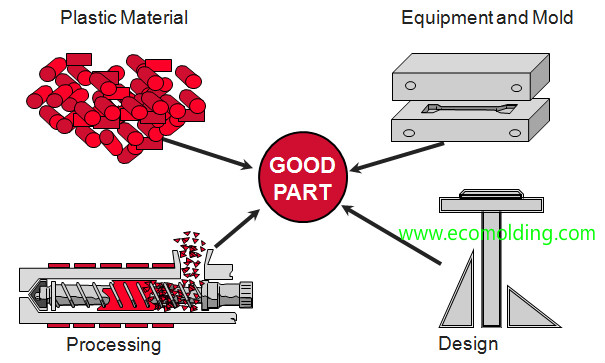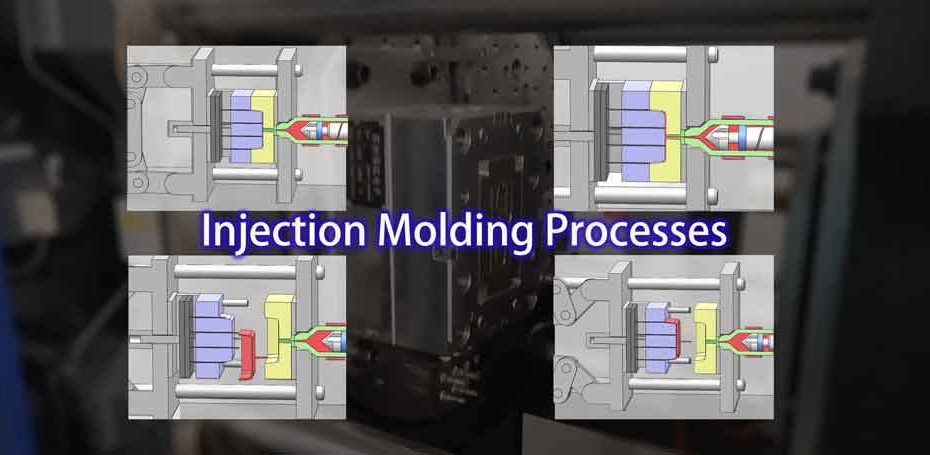Comprehending the Essentials of Plastic Shot Molding Processes
Plastic shot molding works as a keystone of modern-day production, giving a systematic approach to generating intricate parts with accuracy. This process not just incorporates the basic actions of melting and injecting materials into molds however also entails a nuanced understanding of numerous influencing factors, such as temperature and pressure. As sectors increasingly require effectiveness and high quality, the ins and outs of this methodology come to be a lot more essential. Discovering these crucial elements could reveal just how even small modifications can lead to considerable improvements in production results, increasing questions concerning the capacity for advancement in this recognized procedure.
What Is Plastic Injection Molding?
Plastic shot molding is a commonly used production process that changes thermosetting and thermoplastic products into specific and complex shapes. This technique is preferred for its capacity to produce high quantities of similar components with remarkable accuracy, making it a vital approach in numerous markets, consisting of automotive, durable goods, and medical tools.
The process entails thawing the picked plastic material and injecting it right into a mold under high pressure. The mold, designed to the specs of the preferred part, enables the liquified plastic to form as it strengthens and cools down. When the product has set, the mold and mildew is opened up, and the ended up part is expelled.
Plastic shot molding provides numerous advantages, including reduced waste, uniformity in production, and the capability to integrate complex designs that might be challenging with other making methods. Furthermore, it supports a wide array of products, each offering one-of-a-kind residential or commercial properties that can be tailored for particular applications. As sectors continue to introduce, plastic injection molding remains at the leading edge, allowing the growth of advanced items that satisfy progressing consumer demands.
The Injection Molding Refine
The shot molding process is an advanced strategy that entails several crucial stages to create premium plastic parts. Plastic pellets are fed right into a warmed barrel where they are thawed right into a viscous liquid. This molten plastic is after that injected under high pressure right into a precision-engineered mold and mildew, which shapes the product into the preferred type.
Once the mold is loaded, the plastic is enabled to solidify and cool down, taking the shape of the mold and mildew dental caries. Cooling time is vital, as it influences the cycle time and the last properties of the molded component. After adequate cooling, the mold and mildew opens up, and the completed part is expelled making use of ejector pins.

Products Utilized in Injection Molding
Various materials can be made use of in the shot molding process, each offering one-of-a-kind homes that accommodate certain applications. One of the most frequently used products consist of thermoplastics, thermosetting plastics, and elastomers.

Thermosetting plastics, like epoxy and phenolic resins, go through a chemical change throughout the curing process, causing a stiff, inflexible structure. These materials are excellent for applications needing high warmth resistance and structural stability, frequently made use of in electrical insulators and vehicle components.
Elastomers, including silicone and rubber-based products, give versatility and resilience. Their one-of-a-kind homes make them ideal for applications that require flexibility, such as gaskets and seals.
Furthermore, specialty materials like bio-based plastics and composites are obtaining traction for their ecological benefits and enhanced performance qualities, expanding the range of shot molding applications in different markets. Comprehending the residential or commercial properties of these materials is critical for choosing the proper kind for specific projects.
Benefits of Injection Molding
Shot molding stands apart as a very reliable production process that offers numerous advantages for creating complicated get rid of precision. Among the most considerable advantages is the ability to create intricate styles that would certainly be challenging or impossible to accomplish with various other methods (Plastic Injection Molding). The procedure permits in-depth features and tight resistances, ensuring premium components
In addition, injection molding is recognized for its quick manufacturing abilities, making it an excellent option for high-volume manufacturing. Once the mold is created, components can be produced promptly, reducing lead times and enhancing general productivity. This effectiveness not only decreases manufacturing costs yet also provides an affordable edge on the market.
The flexibility of materials utilized in shot molding further boosts its allure. A broad variety of thermoplastics and thermosetting polymers can be utilized, enabling makers to select products that finest satisfy their certain needs, including toughness, versatility, and heat resistance.
Furthermore, the procedure decreases waste, as excess material can commonly be reused and reused. This sustainability facet adds to a reduced ecological impact, making injection molding a responsible production choice. Generally, the benefits of shot molding make it a recommended technique for lots of industries.
Aspects Affecting Item High Quality
While various factors can influence product high quality in injection molding, understanding check my source these aspects is vital for achieving optimal results. Secret elements include product selection, processing parameters, and mold design.
Product option plays an important duty, as different polymers exhibit one-of-a-kind properties that impact flowability, strength, and thermal security. Inadequate material selection can lead to issues such as bending or incomplete dental filling.
Handling specifications, including pressure, cycle, and temperature time, must be carefully controlled. Variations in these setups can result in disparities partially dimensions and surface area finish. Excessively high temperatures may cause deterioration of the polymer, while inadequate pressure can result in short shots.
Mold and mildew design is just as important, as it determines the flow of the molten plastic and the cooling procedure. Poorly designed molds may bring about unequal cooling rates, leading to dimensional errors and residual anxieties.

Final Thought
In conclusion, plastic shot molding works as a crucial manufacturing process that makes it possible blog for the effective manufacturing of premium parts. Proficiency of the injection molding procedure, including the understanding of materials and the have a peek at this website influence of different elements on product high quality, is essential for achieving ideal outcomes. The advantages of this approach, such as cost-effectiveness and design adaptability, additional emphasize its relevance throughout several sectors, solidifying its status as a favored selection for high-volume production.
Plastic injection molding offers as a cornerstone of contemporary production, supplying a methodical approach to creating complex components with precision.Plastic shot molding offers several benefits, including minimized waste, uniformity in manufacturing, and the capacity to integrate elaborate designs that might be testing with other making techniques (Plastic Injection Molding). As sectors continue to innovate, plastic injection molding continues to be at the leading edge, allowing the growth of sophisticated items that satisfy developing consumer demands
The shot molding process is an innovative technique that involves numerous key stages to generate top notch plastic parts.In final thought, plastic injection molding offers as an essential production procedure that enables the efficient manufacturing of premium parts.